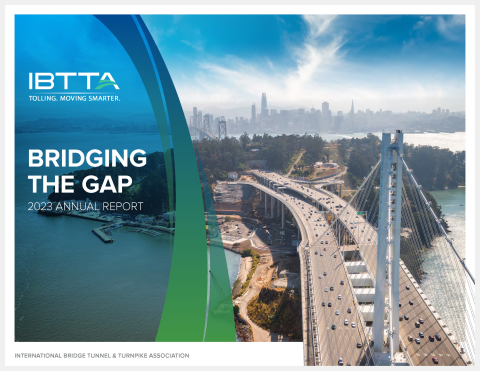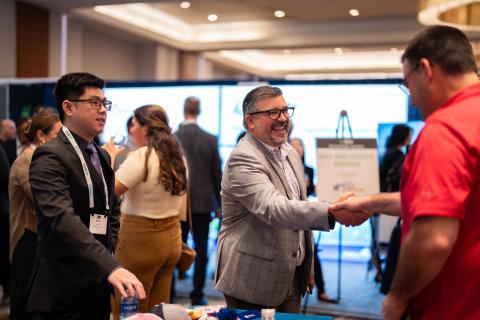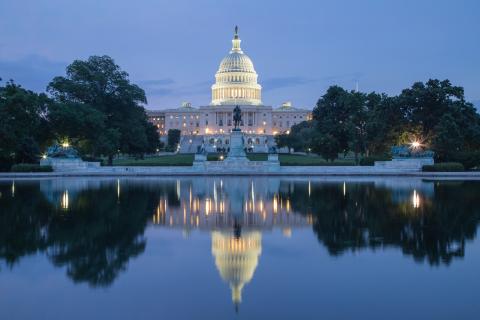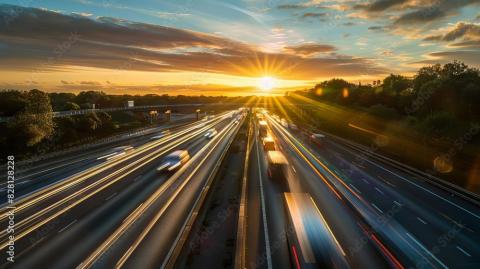- Home
- IBTTA Insights
- Racing Toward Sustainable and Smart Mobility
Stories
Racing Toward Sustainable and Smart Mobility

Over 100 years ago our great-grandparents faced an untenable situation. In the late 19th century horses were the transport mode of choice and horse manure was the principal problem of the day. Horses produced 15-35 pounds of manure and two pints of urine daily. The first international urban planning conference met in New York City in 1898 to discuss how to rid the world of manure. It was feared that within 50 years city streets would be buried in nine feet of manure.

Image: London Hansom Cab, 1894
Source: https://www.historic-uk.com/HistoryUK/HistoryofBritain/Great-Horse-Manu…
Fortunately, human ingenuity and technology innovation saved the day and by 1920 the motorcar overtook horses as the preferred mode of transportation and a crisis was averted.
Over the last century the evolution of gas-powered vehicles fundamentally has altered the urban landscape and changed our perspective on mobility. While we have reaped the benefits of gas-powered motorized transport, it has come at a cost. While our city streets are no longer plagued by manure, our air has been dirtied by harmful emissions.
The transportation sector is a major contributor to the global problems of worsening air pollution and increased production of greenhouse gases (GHG). The average gas-powered car emits 8887g of CO2 per gallon of gas and a total of 4.6 metric tons of CO2 every year. In the United States alone, passenger cars and light trucks are responsible for 2.4% of global GHG emissions.

Image: Air pollution over Los Angeles, CA
Source: Image by Ira Gorelick from Pixabay (not required)
Sustainable transportation is a growing movement to transform transport systems into minimizing or eliminating pollution and becoming carbon neutral. Many companies in the transport sector have pledged to become carbon-neutral in the next 15-30 years led by automobile manufacturers who are committed to producing only electric vehicles while powering their manufacturing plants with green energies.
While a zero-emission fleet will help reduce air quality and GHG issues, it will not address the need for more accessible and equitable mobility nor will it solve our growing roadway congestion and safety problems. The current situation is untenable and getting worse each year. A holistic approach to sustainability and mobility is needed to guide the development of next-generation transportation systems.
In December 2020, the European Commission released a document entitled “Sustainable and Smart Mobility Strategy – putting European transport on track for the future.” The document presents a compelling vision of a more sustainable transport system that enables improved mobility and accessibility to transport options for all citizens while recognizing the immense costs that our current transportation system imposes on the health of our society through congestion, accidents, and pollution (air, noise, and water). The paper also discusses the need to transform our transport systems for better system resiliency, digitalization, and automation.
The European Green Deal calls for a 90% reduction in greenhouse gas emissions from transport in order for the EU to become a climate-neutral economy by 2050, while also working towards a zero-pollution ambition. A three-pillar approach is proposed to achieve this systemic change:
- Make all transport modes more sustainable;
- Make sustainable alternatives widely available in a multimodal transport system; and
- Put in place the right incentives to drive the transition.
One of the core philosophies behind the plan is the notion that mobility and transport “is an enabler of our economic and social life.” Transport is critical for driving economic development and the free flow of people and goods. Having an accessible, equitable, and resilient multimodal transportation system is essential.
I am greatly encouraged by this report and the efforts of the European Commission to discuss and address the opportunities and challenges that sustainable and smart mobility pose. They understand that while it is critical that we reduce greenhouse gas emissions, we must also embrace this once-in-a-generation opportunity to fundamentally transform our transport systems and solve the problems our generation has created.
New technology and innovation, including CASE (connected, autonomous, shared, and electric) will be a core part of the solution. Advances in digitalization, cognitive technology, and business intelligence enable us to better calculate and understand the congestion, environmental, and safety impacts that actions of individual travelers and individual vehicles impose on society.
However, technological advancements alone will not allow us to solve our generational problem. We need to change our mindset about how we view the role of transport and mobility in our society.
- Mobility is a fundamental social right. Transport and mobility must be elevated in our thinking as a fundamental social right because it plays such a critical role in upward mobility by providing access to housing, education, medical care, and employment. Strong mobility is correlated with increased economic growth and better quality of life.
- Transport systems must be multimodal. Multimodal transport systems can expand accessibility, offer convenient and economical options for end to end travel, and provide more capacity across the network.
- Multimodal transport must be funded at higher levels. It is distressing that our transportation system is grossly underfunded. Like our public education that strives to impart basic knowledge to all children, transportation provides opportunity through mobility and accessibility. We must recognize the need for everyone to support our multimodal transportation system, regardless of the mode we prefer. Many of us may rely on personal vehicles but need to support a multimodal transportation system, even if we do not use it. Those who send their children to private school still support public schools through their taxes.
- We need to recognize the external costs of vehicles and embrace the principal of “paying my fair share”. Personal vehicles contribute to congestion, infrastructure degradation, air pollution, and increased GHG yet owners rarely pay the real cost of these societal impacts. Technology advancement now allows us to better calculate and track the impact of individual vehicles and provide means of dynamic pricing. It will also force people to think more critically of transportation options and tradeoffs.
Eliminating the foundational problems and transforming our transport systems will not happen overnight, given the scale of the measures required:
- Eliminating transport-generated GHG requires a majority, if not the entire fleet of gas-powered vehicles to be replaced;
- Achieving zero roadway fatalities requires better vehicle connectivity and automation that is years off; and
- Adopting new funding approaches and fixing the inadequacy of the current gas tax model will require time
We need to focus on incremental progress and everyone doing their part, no matter how big or small. The fact that vehicles in the US contribute 2.4% of global GHG emissions may seem to many like an insignificant number, but it is not. Each of us has an opportunity to make different choices about how we fund, operate, and use our transport systems. A large number of small contributions will quickly add up to significant progress. We witnessed during the COVID pandemic that changes to travel demand and vehicle usage made noticeable changes in air quality, congestion relief, and traveler safety.

As we come face to face with our opportunity to globally transform mobility and create more sustainable transport systems, how will you rise to the occasion?
Joining IBTTA connects you to a global community of transportation professionals, offering unmatched opportunities for networking, knowledge-sharing, and collaborative innovation in the tolling and transportation sector.
Follow IBTTA on social media for real-time updates on transportation trends and collaborative opportunities.





